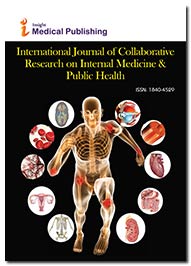Abstract
Health status and Medical Care-Seeking Behaviour of the poorest 20% in Jamaica
Background and Objectives: Data for the last 2-decades (1988-2007) in Jamaica have shown a gradual decline in the percentage of people in the lowest 20th income quintile category. Despite this reality, statistics from WHO for 2005 revealed that 80 percent of chronic diseases are in low-to-middle income nations. Poverty is undoubtedly correlated with ill-health; but no study has ever been done in the Caribbean in particular Jamaica that examines health status, health care-seeking behaviour, health insurance coverage and the typology of illness influencing those people in the poorest categorization. This study bridges the gap in the literature by evaluating how recurring illness influences the poorest, health status and health care-seeking behaviour of this group as well as ascertaining factors that account for their good health status and medical care-seeking behaviour.
Methods: Data from the Jamaica Survey of Living Conditions (JSLC) for 2007 commissioned by the Planning Institute of Jamaica and the Statistical Institute of Jamaica were used to provide the analyses for this study. The sample for this study was 1,343 respondents who are classified as receiving 20th lowest percentile of the income in Jamaica (or the poorest 20%). Descriptive statistics were used to provide background information on the sample; Chi-square and F-statistic were used for bivariate analyses and logistic regression was performed to determine the factors for the model. Data was stored, retrieved and processed using SPSS for windows 16.0 and a 5 percent level of significance was used to test significance.
Results: The sample was 1,343 respondents (671 males and 672 females). Majority of the sample did not have health insurance coverage (93.2%) compared to 5.6% with public coverage and 1.2% private. A substantial percentage of the sample had at most basic schooling (71.5%); 17.5% primary or preparatory; 10.6% secondary and 0.4% tertiary. Only 14.7% of respondents indicated that they had an illness. Of those who indicated an illness, 93.2% of them reported that this was diagnosed by a medical practitioner. The self-reported diagnosed ailments were asthma, 11.9%; hypertension, 24.2%; arthritis, 7.7%; diabetes mellitus, 10.8%; diarrhoea, 1.5%; influenza, 13.4% and 24.2% did not specify. Four variables emerged as statistically significant correlates of good health status. These are age (OR = 0.956, 95% CI = 0.945 – 0.968); illness (OR = 0.125, 95% CI = 0.085 – 0.185); male (OR = 1.543, 95% CI = 1.107 – 2.151) and per capita consumption (OR = 1.152, 95% CI = 0.741 – 1.790). The model (good health status) had statistically predictive power [χ2 (df = 10) = 354.269, p < 0.001]; Hosmer and Lemeshow goodness of fit χ2= 6.086, P = 0.638, correctly classify 85.4% of the sample (correctly classified 96.1% of those who had good health status and 45.3% of those who had poor health status). The model (i.e. independent variables) can explain 38% (Nagelkerke R2) of the variability in good health status of the sample. Conclusion: The thrust to reducing poverty in developing countries in particular Jamaica must be coupled with lifestyle behavioural modification programmes for the poorest 20% along with multi-dimensional approach to health, perception of health and treatment among this cohort.
Author(s): Paul Andrew Bourne
Abstract | Full-Text | PDF
Share this

Abstracted/Indexed in
- Google Scholar
- Genamics JournalSeek
- CiteFactor
- Directory of Research Journal Indexing (DRJI)
- WorldCat
- Proquest Summons
- Secret Search Engine Labs
Open Access Journals
- Aquaculture & Veterinary Science
- Chemistry & Chemical Sciences
- Clinical Sciences
- Engineering
- General Science
- Genetics & Molecular Biology
- Health Care & Nursing
- Immunology & Microbiology
- Materials Science
- Mathematics & Physics
- Medical Sciences
- Neurology & Psychiatry
- Oncology & Cancer Science
- Pharmaceutical Sciences

